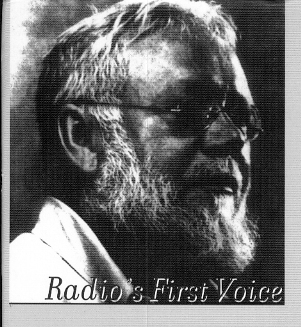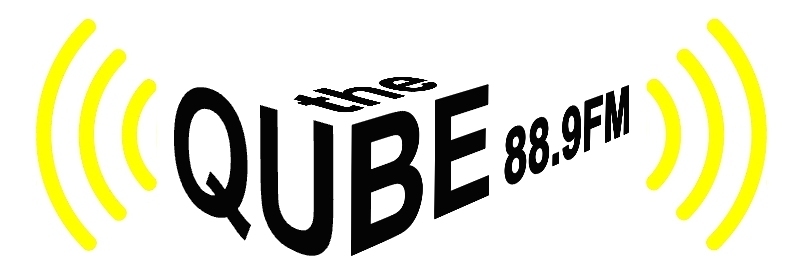|
A Brief Broadcast History of CJMQ Radio

Reginald Aubrey Fessenden
When stepping on to the campus of
Bishop’s University one is in fact stepping into the path of radio’s history.
Canadian, Reginald Aubrey Fessenden, was born in East Bolton, Quebec (about 30 minutes
from Bishop’s), and was in fact an alumnus of the University. Along with American Lee
de Forest, Fessenden was responsible for the development of the technology that allowed
for the transmission of the human voice.
At 16 years of age Fessenden began teaching Greek and French during the day at
Bishop’s College School, while attending University level courses in mathematics
during the evenings. Although Fessenden left Bishop’s to accept a teaching position
at the Whitney Institute in Bermuda, his endeavors at Bishop’s are often referred to
as the academic beginnings of his career (Carpenter 102).
His greatest achievement that year, occurred at 9 p.m.,
Christmas Eve, 1906, when wireless operators of several United Fruit Company ships in the
Atlantic, tipped off to expect something unusual on their NESCO-provided sets, heard
Fessenden transmit a recording of Handel’s “Largo” on an Ediphone, play
“Oh Holy Night” on the violin, and read from the Bible before wishing them a
Merry Christmas. Reginald Aubrey Fessenden was the first person to prove that voices
and music could be heard over the air without wires.
Fessenden was an incredible character: A holder of over
five hundred patents, he also invented sonar, the depth sounder, carbon tetrachloride, the
beeper/pager, the voice-scrambler, the radio compass (known today as LORAN), the tracer
bullet and, yes, the automatic garage-door opener. He won Scientific American's Gold
Medal in 1929 for the fathometer, which could determine the depth of water under a ship's
keel. But we remember him here, not only as the inventor of radio, but as the world's
first broadcast producer.
CJMQ is proud to have dedicated our new Broadcast Booth to
honour a native son of the Eastern Townships Reginald Aubrey Fessenden, Radio's First
Voice.
His grave contains the paean:
"By his genius distant lands
converse and men sail unafraid upon the deep."
Back to CJMQ:
Under the moniker of RCBU, standing for Radio Club of
Bishop’s University, CJMQ broadcast on the AM dial at 530 and via Carrier Current
transmission (localized within particular physical structures) for some 40 years.
In 1987 CJMQ received its "Letters Patent",
officially incorporating as CJMQ Radio Bishop’s. Inc.
In 1995 CJMQ applied for and was granted a low power
not-for-profit Campus & Community (C & C) FM radio license from the Canadian
Radio-Television and Telecommunications Commission (C.R.T.C.). The major condition of a C
& C radio license is that stations endeavor to provide an alternative source of news,
information, and entertainment programming to that being offered by commercially oriented
broadcasters within the same region. A focus on local content is of primary importance.
Since the granting of an FM license, despite much turmoil, CJMQ has managed to provide
just such a service.
At the time of its FM inception CJMQ was licensed to
broadcast at an effective radiated power of 25 watts.
25 watts of power allowed CJMQ’s signal to travel, with a limited degree of success,
throughout the Town of Lennoxville and portions of Sherbrooke’s downtown core. Given
the mountainous geography of this particular region the reception of a 25 watt radio
signal was often troublesome however, leaving particular areas (such as Bishop’s
University campus itself and one side of the main street in downtown Lennoxville) with a
static filled signal throughout the majority of the broadcast day.
Given this trouble CJMQ applied to the C.R.T.C. for a boost to its broadcast power in
November of 1997. Although a clearer signal was the initial goal of this application, the
ensuing effect of a much wider coverage area was also desirable. In March of 1998 CJMQ was
awarded a power increase to 500 watts. CJMQ officially began broadcasting to the
population of the Eastern Townships at this increased power on June 1st, 1998.
November 17th 2003 the CRTC held a public
hearing in Ottawa, among the applications being considered was the application of CJMQ to
change its status from that of a Campus Based Community Radio Station to that of a
Community Radio Station. Since no interventions were filed, CJMQ was a non-appearing
event. Three months went by and then we got the call from the CRTC, CJMQ's application had
been approved! We are now a full fledged Community Radio Station!
CJMQ is proud to be the English Radio Voice of
the Eastern Townships. As the only locally produced English Broadcaster in the Eastern
Townships with an estimated listenership of 30,000 and a broadcast reach of 70 km. CJMQ is
clearly poised to serve our community.
| 


